Farming a Population Explosion
Disease Danger
Andrew Marr’s History of the World - Age of Survival
When people settled down to farm, life got harder. The archaeologists are clear. Farmers became smaller and they died younger than hunter-gatherers. Labour in the fields led to joints inflamed by arthritis, and the diet of sticky porridge brought tooth decay for the first time.
So why would people farm when the world was still teeming with game? More to the point, why would they carry on farming? Well, part of the reason is that they got trapped by their own population explosion. Once people were settled down with more food, the numbers in the families grew. Hunter-gatherers had to limit the number of children to those who could be carried with them, but farmers didn’t.
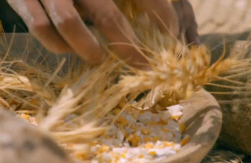
As human numbers rose, and people started to work together, farmers began settling down in larger groups. Scattered across the plains of Anatolia in Turkey are a mysterious mounds. Hidden inside them is the earliest evidence of that next big step - towns.
9,000 years ago, a community, a small town of up to 8,000 people, lived here at Catalhoyuk or Çatalhöyük. And it’s here that we meet one of the first individuals to emerge from our early history.
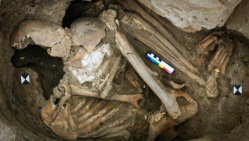
Her skeleton was excavated in 2004. She was only in her twenties when she was buried underneath the floor of her home. She was found curled up, tightly holding a skull, forehead to forehead like this. The skull had been plastered and, in fact, it had been plastered and re-plastered quite a few times, suggesting that it had been used for one burial and then another, buried again and dug up and used again.
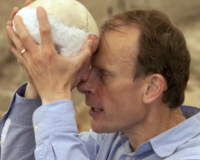
It was almost certainly an ancestor, somebody who mattered to her family. What we seem to be seeing here is ancestor worship - worship the ground that you stand in and the people you come from. The young woman was buried wearing a rare leopard-claw necklace. What’s going on here is the opening up of another human frontier. As a town, Catalhoyuk is a little conquest of physical space, the here and now, but the leopard lady’s grave is an attempt to take control of time, too, to link the dead, the living and those still to be born.
These were people who, if asked, “Who do you think you are?” could give a very clear answer. Their town was a compact network of mud-brick houses, almost like a human beehive, and not so different from modern shanty towns in today’s world.
People walked across the town on flat roofs and they entered their homes via ladders through the rooftops. First of all, it is recognisably a house, not so different in the way it’s laid out to innumerable flats and apartments and homes today.
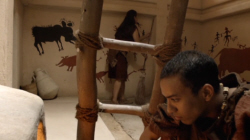
Five to ten people probably lived in this place, so a familiar design. But the second thing about it is that the people who lived here were scrupulously clean and they couldn’t wash the floors and walls because they were made of earth but what they did was they whitewashed them, endlessly. Over here you can see these little lines and that was layer upon layer of whitewashing, and this wall, archaeologists tell us, was whitewashed more than 400 times.
So here we are, right at the beginning of human society, in a place and surrounded by the ghosts of people that we already recognise.
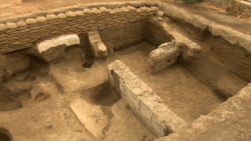
The Leopard Lady grew up in a well-ordered and stable community where men and women were equally well fed and enjoy the same social status. This seems to have been a peaceful place with no defensive walls and no signs of social division or conflict.
There are no temples, there is no palace, there are no warriors’ areas or special women’s quarters - just families living alongside one another and co-operating, almost like the modern anarchists’ fantasy of a world without rulers, a society without bosses, and the problem, of course, with that is that these kinds of arrangements always fall apart very quickly.
The people of Catalhoyuk could only manage it for 1,400 years!
But this was no Garden of Eden. Like farming, living in towns brought new dangers. Thousands of people and goats, cows and ducks living in close quarters created perfect conditions for diseases to spread, and there is evidence that tuberculosis passed from cattle to humans at about this time.
Most of the worst threats to human health - smallpox, measles, flu - came first from farm animals. Maybe that’s why the Leopard Lady died an early death, before being buried beneath the floor of her home, like her ancestors.
